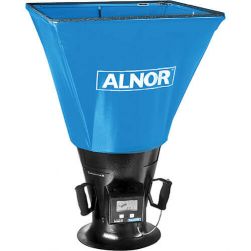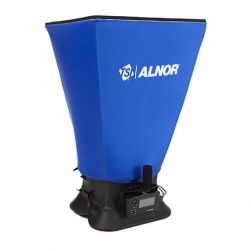Demonstration: How to Set Up a Balometer Capture Hood
In this two-minute video, David demonstrates how to set up a balometer capture hood for testing a ventilation system. For demonstration purposes, David uses the TSI Alnor Balometer EBT731.
FREQUENTLY ASKED QUESTIONS ABOUT BALOMETER CAPTURE HOODS
What is a balometer?
A balometer identifies opportunities for improving air flow distribution within a duct system. A balometer can identify the source of indoor air quality issues as well as comfort issues relating to improper ventilation.
How do you read a balometer?
A balometer will give you a digital readout as well as an analog. On the side of the instrument is a red button that will lock the reading into place. So, once you’ve taken a reading, you can bring the instrument down to see the reading easier.
What is Alnor Balometer?
The TSI Alnor EBT731 capture hood is used to take direct air volume readings at diffusers and grilles. The detachable digital micromanometer and optional probes makes it suitable for a wide variety of measurement applications.
How do you use an Alnor flow hood?
- Setup the balometer capture hood (see video above).
- Place balometer capture hood against the register with a tight fit.
- Use the red button on the side to lock the reading into place.
- View your reading.
How does a velometer work?
A velometer is an accelerometer with an analog signal integration circuit. The device provides a voltage reading based on the air velocity in an area.
What is a flow hood in HVAC?
Flow hoods—also called balometers–are used in the HVAC industry to measure the air flows at registers.
How do I balance my HVAC airflow?
To balance your HVAC airflow, here are a few things you can try:
- Close or open your register
- Check filters for cleanliness
- Install window coverings to prevent heat
- Remove electronic equipment from areas near thermostat
- Check for drafts
- Adjust ceiling fans
- Turn thermostat fan setting on
- Check your insulation


